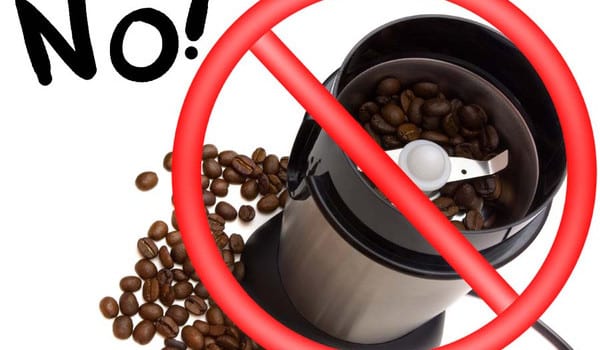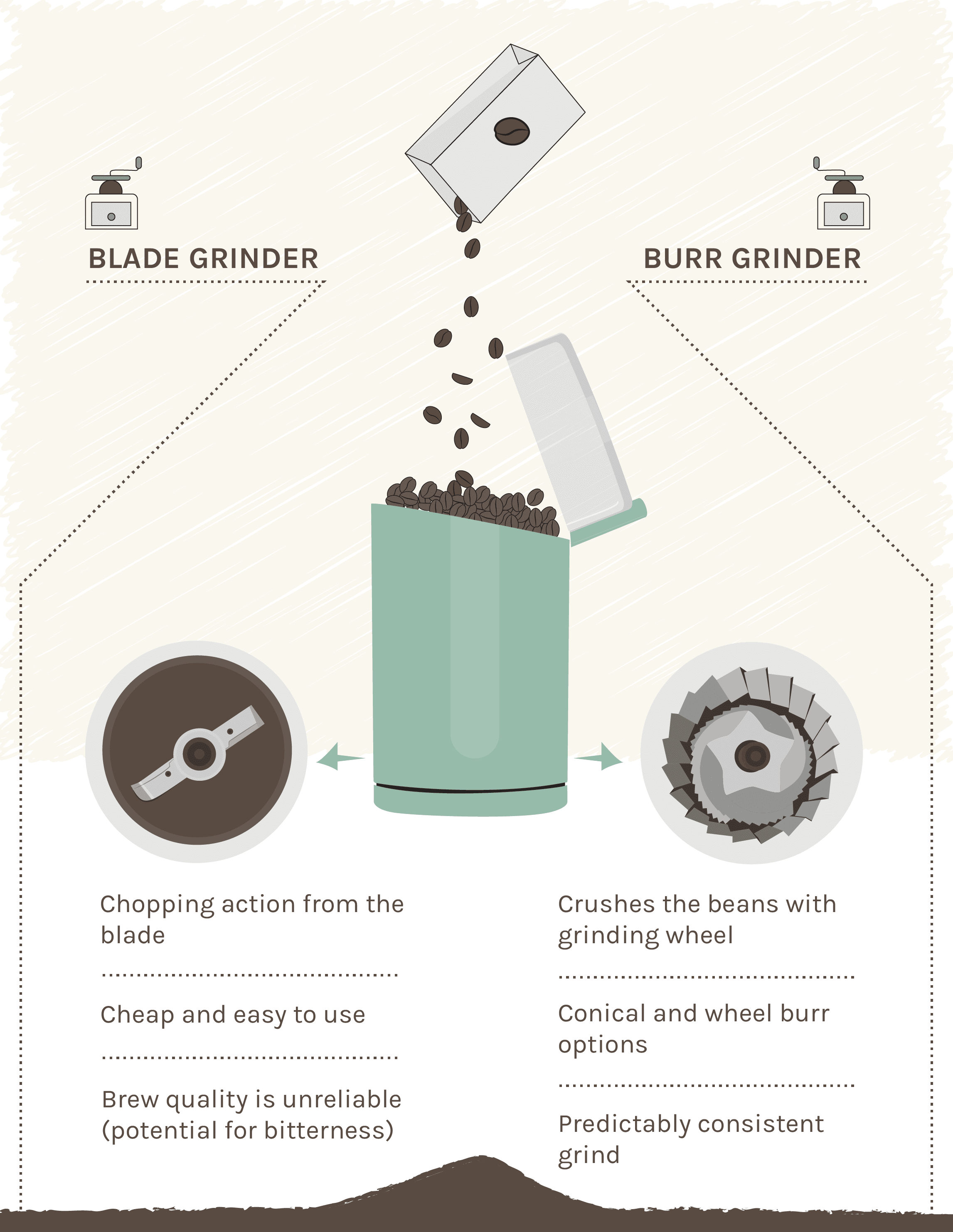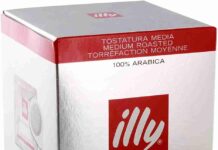Coffee lovers around the world are always on the quest for that perfect cup of joe, and the key to achieving that lies in the type of grinder you use. While blade grinders may seem convenient, their impact on the quality of your brew is far from ideal. In this article, we explore the reasons why using a blade grinder with coffee can lead to disappointing results and offer alternative options that will elevate your coffee experience to new heights. So, grab a mug, sit back, and prepare to discover the secrets to unlocking the full potential of your favorite morning ritual.
Uneven Grinding
Inconsistent Size
One of the main drawbacks of using a blade grinder for coffee is the inconsistent size of the grind. Unlike burr grinders, which evenly grind the coffee beans, blade grinders rely on a spinning blade to chop the beans into smaller pieces. However, this chopping action often leads to uneven and unpredictable grinding. Some parts of the coffee beans may be ground too finely, while others remain relatively coarse. This inconsistency can result in an uneven extraction when brewing, leading to a less-than-ideal cup of coffee.
Serrated Blade
Another issue with blade grinders is the presence of a serrated blade. While this blade is effective at breaking down the beans, it can also create jagged edges and increase the production of fines. These fines, which are tiny particles of coffee, can further contribute to an uneven extraction and may clog your coffee filter. Additionally, the serrated blade can also generate more heat during the grinding process, which can negatively impact the flavor profile of the coffee.
Heat Generation
Blade grinders generate heat as the fast-spinning blade comes into contact with the coffee beans. This heat can cause the coffee beans to become heated, leading to a loss of volatile aromatic compounds and altering the overall taste of the brewed coffee. Moreover, excessive heat can also accelerate the oxidation process of the beans, further degrading the flavor. In contrast, burr grinders tend to generate less heat, preserving the delicate flavors and aromatics of the coffee beans.
Lack of Control
Limited Grind Settings
Blade grinders often lack the ability to adjust the grind size, limiting your control over the final result. This lack of versatility can be a significant drawback, especially if you prefer different grind sizes for various brewing methods. For instance, a coarse grind is typically used for French press, while a finer grind is recommended for espresso. Without the option to adjust the grind settings, you may struggle to achieve the desired consistency for your preferred brewing method.
Inability to Adjust
In addition to limited grind settings, blade grinders also lack the capability to make incremental adjustments. Fine-tuning the grind size can be crucial to achieving optimal extraction and flavor when brewing coffee. With a blade grinder, you are confined to a predetermined grind size, making it difficult to experiment and find the perfect setting for your taste preferences.
Over-extraction
The inability to adjust the grind size can also lead to over-extraction. When the coffee grounds are too fine, they can easily over-extract during the brewing process, resulting in a bitter and unpleasant taste. Over-extracted coffee can leave a harsh aftertaste and mask the delicate flavors that make each coffee bean unique. By using a blade grinder, you risk brewing a cup of coffee that lacks balance and complexity.
This image is property of foodal.com.
Poor Extraction
Under-extraction
Blade grinders can contribute to under-extraction, where the coffee grounds do not fully release their flavors and aromatics during brewing. This is often caused by an inconsistent grind size and improper brew time. The inconsistency of blade grinders makes it challenging to extract the desired flavors effectively. As a result, the coffee may taste weak, lacking depth and complexity.
Bitter Taste
Due to the uneven grind size and over-extraction that blade grinders can cause, the resulting coffee may exhibit a bitter taste. Over-extracted coffee tends to extract more of the bitter compounds present in the beans, leading to an unpleasant and overpowering bitterness in the cup. This bitterness can be off-putting and may mask the subtle flavors and nuances that high-quality coffee beans offer.
Lost Aromatics
Aromatics play a crucial role in the overall coffee experience, enhancing the flavor and providing an enticing aroma. Unfortunately, blade grinders can lead to a loss of these delicate and volatile compounds. The heat generated during grinding, combined with the inconsistent grind size, can cause the coffee beans to lose their aromatic compounds, resulting in a less flavorful and aromatic cup of coffee.
Wasted Coffee
Clumping
Blade grinders often produce coffee grounds that clump together, making it difficult to achieve a consistent extraction during brewing. The uneven grind size and jagged edges of the coffee particles contribute to clumping, leading to uneven water flow and poor extraction. These clumps can also cause clogging in coffee filters, resulting in a slower brewing process and potentially affecting the taste of the final brew.
Static
Another issue with blade grinders is the static electricity they create during the grinding process. This static can cause the coffee grounds to cling to the grinder’s sides, chute, and container, making it challenging to transfer the coffee to your brewing device without spilling or leaving a mess. Additionally, the static can also make cleaning the grinder more difficult, as the coffee grounds tend to adhere stubbornly to its components.
Fine Grind Loss
Blade grinders are notorious for producing a significant amount of fine coffee particles and even dust-like particles. This fine grind loss not only affects the consistency of the extraction but also leads to wasted coffee. These tiny particles can end up sticking to various surfaces, such as the grinder, container, and even your hands, resulting in a loss of coffee and a less efficient brewing process.
This image is property of miro.medium.com.
Lifespan of Coffee
Exposure to Air and Light
Coffee beans are susceptible to deterioration when exposed to air and light. Sadly, blade grinders can exacerbate this issue. The grinding process of a blade grinder exposes a larger surface area of the coffee beans, making them more vulnerable to oxidization. The extended contact with air and light degrades the flavor and freshness of the coffee, resulting in a stale and lackluster brew.
Oxidation
Oxidation is a natural process that occurs when the coffee beans come into contact with oxygen. It can significantly impact the taste and aroma of the coffee, leading to a loss of freshness and complexity. Blade grinders, with their inefficient grinding mechanism and subsequent exposure of the beans to more oxygen, can accelerate the oxidation process. This can leave you with coffee that tastes dull and has lost its vibrant and nuanced flavors.
Stale Taste
The combination of exposure to air, light, and accelerated oxidation results in coffee that has a stale taste. Stale coffee lacks the vibrant and lively flavors that freshly ground beans can offer. It loses its complexity, subtlety, and overall appeal. By using a blade grinder, you risk losing the full potential and freshness that coffee beans have to offer.
Noisy Operation
Disruptive Noise
One common complaint about blade grinders is their noisy operation. The fast-spinning blades produce a loud grinding sound that can be disruptive, especially in quieter environments such as offices or early mornings at home. This noise can interfere with conversations, work, or peaceful moments, making it less than ideal for those seeking a quiet and relaxed coffee brewing experience.
Disturbing Environment
Aside from being disruptive, the noise produced by blade grinders can disturb the overall environment. This is particularly true if you live with others or have close neighbors. The loud grinding noise can wake people up or disturb their peace, creating an unpleasant atmosphere. If you prefer a more peaceful and harmonious coffee brewing experience, a blade grinder may not be the best choice.
This image is property of www.thespruceeats.com.
Messiness
Flying Coffee Grounds
Blade grinders tend to generate more coffee grounds that become airborne during the grinding process. These flying coffee grounds can create a messy and unclean brewing area. They may end up on your countertop, the surrounding surfaces, and even your clothes. Cleaning up after each grind can become a tiresome task, leading to frustration and inconvenience.
Difficult to Clean
Cleaning a blade grinder can be challenging due to its design. The blades and grinding chamber make it difficult to access certain areas where coffee grounds tend to accumulate. The static electricity, clumping, and fine grind loss also contribute to the overall messiness and make it harder to achieve a thorough clean. A dirty grinder not only affects the taste of the coffee but can also impact the longevity and performance of the machine.
Blade Dullness
Inconsistent Performance
Over time, the blades of a blade grinder can become dull and less effective at grinding coffee beans. This dullness leads to inconsistent performance, as some beans may be partially chopped rather than ground to the desired size. Uneven grinding can result in an imbalanced extraction and affect the overall taste and quality of the brewed coffee.
Difficult to Sharpen
Unlike burr grinders, blade grinders are not easily sharpened. The blades are often made of stainless steel and feature serrated edges, making them challenging to sharpen with conventional sharpening tools. This lack of accessibility and convenience means that once the blades become dull, the performance of the blade grinder suffers, and it may be time to invest in a new grinder.
This image is property of coffeeaffection.com.
Limited Durability
Plastic Construction
Many blade grinders on the market are constructed primarily from plastic materials. While this may make them lightweight and affordable, it often compromises their durability. Plastic parts can break or wear down over time, particularly with frequent use. The constant grinding motion and the pressure exerted on the plastic components can cause them to crack or become ineffective. This decreases the overall lifespan of the grinder and may require replacement sooner than desired.
Breakage
Blade grinders with plastic components are prone to breakage, especially if mishandled or dropped accidentally. The fragile nature of the plastic parts can result in cracks or even complete breakage, rendering the grinder inoperable. This limitation in durability can be frustrating, particularly if you were relying on the grinder for your daily coffee routine. Consider investing in a more robust and sturdy grinder for a longer-lasting and reliable coffee grinding experience.
Alternative Options
Burr Grinders
A popular alternative to blade grinders is the burr grinder. Burr grinders use two metal or ceramic burrs to grind the coffee beans uniformly. These burrs can be adjusted to achieve different grind sizes and provide more control over the consistency of the grind. The evenness of the grind and the reduced heat generation of burr grinders result in a more precise and flavorful extraction. While burr grinders may be more expensive than blade grinders, they offer superior performance and long-term value for coffee enthusiasts.
Manual Grinders
For those seeking a more hands-on and portable option, manual grinders are an excellent choice. These grinders feature manual grinding mechanisms known as burrs, which require physical effort to grind the beans. Manual grinders offer the advantage of precise control over the grind size, allowing you to achieve the perfect consistency for your brewing method. They are also quieter than blade grinders and give you the freedom to grind coffee beans wherever you go, making them ideal for travel or outdoor adventures.
Coffee Shops
Lastly, if you don’t want the hassle of grinding coffee beans at home, you can always rely on your local coffee shop. Coffee shops typically have high-quality grinders that produce consistent and precise grinds. They have the expertise and knowledge to recommend the perfect grind size for your preferred brewing method. Buying freshly ground coffee from a reputable coffee shop ensures that you can enjoy a delicious and well-extracted cup of coffee without the hassle of grinding at home.
In conclusion, while blade grinders may be tempting due to their affordability and accessibility, they come with several drawbacks that can significantly impact the quality of your coffee. From uneven grinding and poor extraction to wasted coffee and limited durability, blade grinders fail to deliver the consistency and control that coffee enthusiasts desire. Consider investing in alternatives such as burr grinders or manual grinders for a more precise and flavorful coffee brewing experience. Alternatively, rely on your trusted local coffee shop for expertly ground beans that will guarantee a delicious cup of coffee every time.
This image is property of cdn.shopify.com.










































